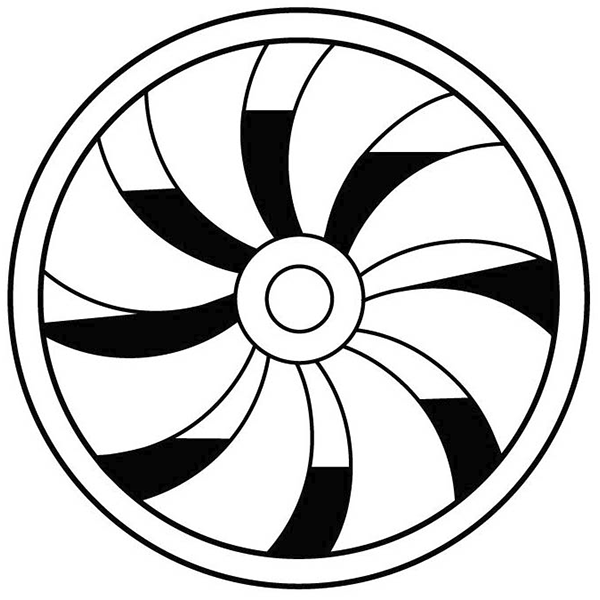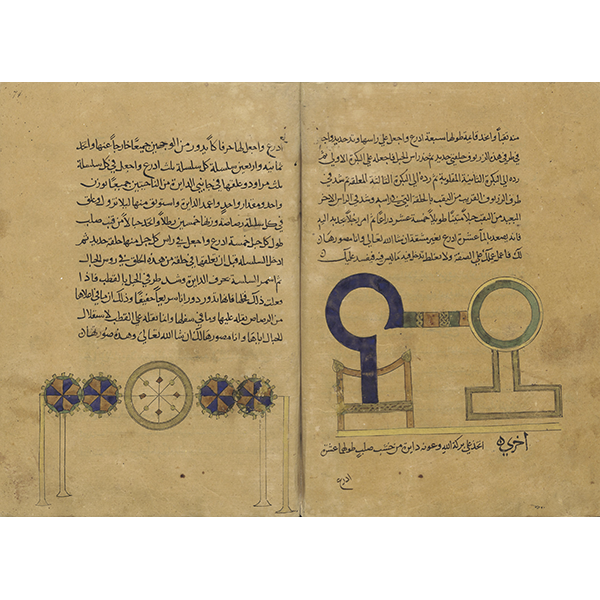Indian and Arab origins
The oldest description of a perpetual-motion machine dates from 7th-century India. The mathematician Brahmagupta, who wanted to represent the cyclical and eternal motion of the heavens, designed an overbalanced wheel whose rotation was powered by the flow of mercury inside its hollow spokes. In the 12th century, another Indian mathematician, Bhāskara, altered the wheel design by giving the hollow spokes a curved shape, producing an asymmetrical course in constant imbalance. The earliest evidence from the Arab world dates from the same period: an anonymous 13th-century manuscript on waterwheels contains drawings and explanations of eight perpetual-motion wheels. The notion of a perpetual-motion machine began to spread in the West in the mid-13th century.
Leiden, Universiteits-bibliotheken, Ms. 3.288 cod. 499 Warm, f. 77v



